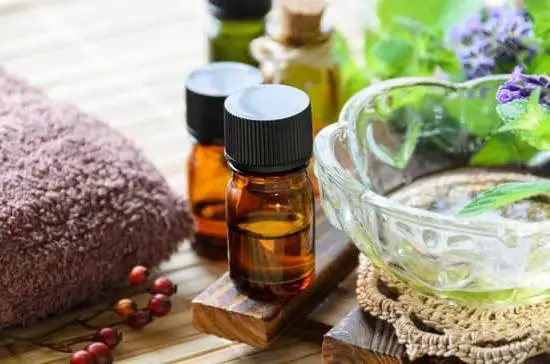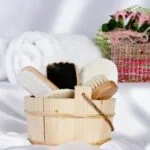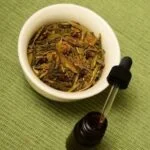Are you looking for a way to rejuvenate your skin and relax your mind at the same time? In this article, we will explore how to do aromatherapy facial, a holistic approach to skincare that combines the benefits of aromatherapy with the rejuvenating effects of a facial treatment. Aromatherapy has been used for centuries to promote wellness and balance, and when applied to facials, it can provide numerous benefits for the skin, including hydration, nourishment, and relaxation.
Aromatherapy is the use of essential oils extracted from plants to enhance well-being. When these essential oils are incorporated into a facial treatment, they can help address various skin concerns such as dryness, acne, or signs of aging. In addition to their skincare benefits, essential oils also have mood-enhancing properties that can promote relaxation and reduce stress during the facial process.
In this introductory section, we will delve into what exactly aromatherapy is and how it can benefit the skin. We will explore the different types of essential oils commonly used in aromatherapy facials and their specific benefits for various skin types and concerns.
Additionally, we will discuss how incorporating aromatherapy into your skincare routine can have long-term positive effects on both your skin health and overall well-being. Join us as we discover the transformative power of aromatherapy facials and learn how to harness its potential for your own skincare regimen.
Understanding Essential Oils
Benefits of Essential Oils
Essential oils have been used for centuries for their various therapeutic and skincare benefits. They are concentrated plant extracts that capture the natural aroma and beneficial properties of plants. When used in aromatherapy facials, essential oils can help address a range of skin concerns such as acne, dryness, aging, and inflammation. Different essential oils offer different benefits, making them a versatile addition to any skincare routine.
Choosing the Right Essential Oils
When selecting essential oils for your aromatherapy facial, it is important to consider your skin type and specific concerns. For example, if you have oily or acne-prone skin, you may want to opt for essential oils with antibacterial and anti-inflammatory properties such as tea tree oil or lavender oil. On the other hand, if you have dry or sensitive skin, you may benefit from hydrating and calming essential oils like rosehip oil or chamomile oil.
Customizing Your Blend
One of the best things about using essential oils in aromatherapy facials is the ability to customize your blend based on your unique skincare needs. You can mix and match different essential oils to create a personalized facial oil or serum that targets your specific concerns.
It is important to dilute essential oils with a carrier oil before applying them to the skin to avoid irritation. A popular carrier oil for facial use is jojoba oil due to its lightweight and non-comedogenic nature.
Understanding how each essential oil interacts with your skin type can help you make informed choices when creating your own aromatherapy facial blends. The right combination of essential oils can enhance the overall effectiveness of your at-home facial experience.
Preparing for Aromatherapy Facial
Aromatherapy facials offer a luxurious and effective way to rejuvenate your skin and relax your mind. Before diving into the step-by-step process of doing an aromatherapy facial at home, it’s essential to ensure that you have all the necessary tools and ingredients ready. Here’s a helpful guide to gathering everything you need for a successful at-home aromatherapy facial:
Tools and Equipment:
Ingredients:
1. Carrier Oils: Choose a carrier oil suitable for your skin type, such as jojoba oil for oily skin, sweet almond oil for dry skin, or rosehip oil for aging skin.
2. Essential Oils: Select essential oils based on their specific benefits for your skin concerns, such as lavender for calming and soothing, tea tree for acne-prone skin, or frankincense for anti-aging properties.
3. Exfoliating Agents: Whether it’s a gentle facial scrub or natural exfoliants like oatmeal and sugar, ensure you have the right exfoliating products for your skin.
4. Face Mask Ingredients: Depending on your skin type and concerns, gather ingredients like clay, honey, yogurt, or aloe vera gel to create customized face masks.
By having all the necessary tools and ingredients ready beforehand, you can streamline the process of performing an aromatherapy facial at home. This preparation ensures that you can fully relax and enjoy the experience without any last-minute interruptions. Now that you have everything set up, let’s move on to the step-by-step guide on how to do an aromatherapy facial at home.
Step-by-Step Guide
Gather Your Tools and Ingredients
Before starting your aromatherapy facial, it’s important to gather all the necessary tools and ingredients. You will need a bowl of hot water, a towel, your chosen essential oils, a carrier oil (such as coconut or sweet almond oil), a gentle facial cleanser, exfoliating scrub, face mask, and moisturizer. Make sure to choose high-quality essential oils that are suitable for your skin type and concerns.
Cleanse and Exfoliate
Start by cleansing your face with a gentle facial cleanser to remove any dirt, oil, and makeup. Once your skin is clean, use an exfoliating scrub to gently slough off dead skin cells and reveal a fresh layer of skin. This will prep your skin for better absorption of the essential oils during the facial.
Steam and Aromatherapy
Boil hot water in a pot and pour it into a heat-safe bowl. Add a few drops of your chosen essential oils to the water – lavender for relaxation, tea tree for acne-prone skin, rose for hydration, etc. Lean over the bowl with a towel draped over your head to trap the steam. Breathe deeply and allow the aromatherapy steam to open up your pores and work its magic on your mind and body.
Following these steps is crucial when learning how to do aromatherapy facial at home to ensure you get optimal results from this relaxing skincare routine.
DIY Aromatherapy Facial Recipes
Aromatherapy facials offer a natural and holistic approach to skincare, utilizing the therapeutic properties of essential oils to nourish and rejuvenate the skin. By creating your own DIY aromatherapy facial recipes, you can tailor the ingredients to address specific skin types and concerns, promoting a personalized and effective skincare experience. Whether you have oily, dry, sensitive, or mature skin, there are customizable recipes that can cater to your unique needs.
Here are some customizable DIY aromatherapy facial recipes for different skin types and concerns:
- For Oily Skin:
- Tea Tree Oil & Lavender Cleansing Facial Steam: Combine hot water with a few drops of tea tree oil and lavender essential oil in a bowl. Drape a towel over your head and lean over the bowl to allow the steam to open up your pores and cleanse your skin.
- Rosemary & Lemon Balancing Face Mask: Mix rosemary essential oil with lemon juice and honey. Apply this mixture onto your face, leave it on for 15 minutes, then rinse with lukewarm water.
- For Dry Skin:
- Chamomile & Jojoba Oil Moisturizing Facial Massage: Blend chamomile essential oil with jojoba oil. Gently massage this mixture onto your face in upward circular motions to hydrate and nourish dry skin.
- Neroli & Ylang-Ylang Hydrating Face Mask: Create a paste using neroli essential oil, ylang-ylang essential oil, and mashed avocado. Apply the mask onto your face for 20 minutes before rinsing off with cool water.
- For Sensitive Skin:
- Calendula & Almond Oil Soothing Facial Compress: Add a few drops of calendula essential oil to warm water. Soak a clean cloth in the solution and gently press it onto your face to calm irritation and redness.
- Geranium & Frankincense Gentle Exfoliating Scrub: Mix geranium essential oil with frankincense essential oil and oatmeal. Use this gentle scrub to exfoliate sensitive skin, then rinse off with tepid water.
By incorporating these customizable DIY aromatherapy facial recipes into your skincare routine, you can enjoy the soothing benefits of aromatherapy while addressing specific skin concerns. These natural recipes offer an alternative to commercial skincare products, allowing you to harness the power of essential oils for radiant and healthy-looking skin.
Whether you have oily, dry, sensitive or mature skin there are many ways how aromatherapy can help boost healthy-looking complexion by using natural ingredients found at home just like olive oil, papaya, lime, coconut milk so why not try it today.
Tips and Tricks
Aromatherapy facials are not only great for the skin, but they also provide a relaxing and rejuvenating experience. To make the most out of your at-home aromatherapy facial, there are a few pro tips that can help you maximize the benefits.
Firstly, it’s important to create a peaceful and calming environment for your aromatherapy facial. This can include playing soothing music, dimming the lights, and incorporating other relaxation techniques such as deep breathing or meditation. Creating a spa-like ambiance will enhance the overall experience and allow you to fully benefit from the aromatherapy aspect of the facial.
Additionally, when selecting essential oils for your facial, be sure to consider their individual properties and benefits. For example, lavender is known for its calming and soothing effects, while tea tree oil is great for combating acne and blemishes. Choosing the right essential oils for your specific skin concerns will ensure that you get the most out of your aromatherapy facial.
Lastly, incorporating facial massage techniques during your aromatherapy facial can further enhance its benefits. Gently massaging the face helps to improve circulation, promote lymphatic drainage, and relieve muscle tension. This can result in improved skin tone and texture, as well as a more radiant complexion.
| Pro Tips | Maximizing Benefits |
|---|---|
| Create a calming environment | Enhances overall experience |
| Choose the right essential oils | Address specific skin concerns |
| Incorporate facial massage techniques | Improves circulation and skin tone |
Aftercare and Maintenance
After completing an aromatherapy facial, it’s essential to understand how to maintain the results and continue reaping the benefits of this relaxing and rejuvenating skincare treatment. One way to prolong the effects of your aromatherapy facial is by incorporating a regular skincare routine that includes elements of aromatherapy.
This can be achieved through the use of essential oils in your daily skincare regimen. Essential oils such as lavender, tea tree, and rosehip oil have various skin benefits and can help maintain the results of your aromatherapy facial.
In addition to using essential oils in your daily skincare routine, it’s important to follow a consistent cleansing, toning, moisturizing, and sun protection regimen. Cleansing helps remove dirt and impurities from the skin, while toning helps balance the skin’s pH levels. Moisturizing is crucial for keeping the skin hydrated, and using sunscreen protects it from harmful UV rays. By adhering to this routine in conjunction with using essential oils, you can prolong the effects of your aromatherapy facial.
Another way to maintain the results of your aromatherapy facial is by practicing self-care techniques that promote relaxation and stress reduction. Stress can have a negative impact on the skin, so incorporating activities such as meditation, yoga, or deep breathing exercises into your daily routine can help support overall skin health and well-being. Remember that taking care of yourself goes beyond just applying products onto your skin; it also involves nurturing yourself physically, mentally, and emotionally.
| Essential Oils | Skin Benefits |
|---|---|
| Lavender | Calming and soothing properties; ideal for sensitive or irritated skin |
| Tea Tree | Antibacterial properties; great for combating acne and blemishes |
| Rosehip Oil | Rich in vitamins A and C; helps brighten skin tone and reduce dark spots |
Benefits of Aromatherapy Facials
In conclusion, incorporating aromatherapy facials into your skincare routine can have numerous long-term benefits for both your skin health and overall well-being. By harnessing the power of essential oils and natural ingredients, aromatherapy facials offer a holistic approach to skincare that goes beyond just addressing surface-level concerns. The use of essential oils in aromatherapy facials can help promote relaxation, reduce stress, and improve mood, contributing to a sense of mental and emotional well-being.
Regular aromatherapy facials can also lead to improved skin health over time. The use of essential oils tailored to specific skin types and concerns can help address issues such as acne, aging, dryness, and inflammation.
Additionally, the massage techniques commonly used in aromatherapy facials can improve blood circulation and lymphatic drainage, leading to a healthier complexion. By incorporating aromatherapy facials into your skincare routine on a regular basis, you may notice an overall improvement in the look and feel of your skin.
It’s important to note that while aromatherapy facials can yield long-term benefits for skin health and overall well-being, it’s crucial to follow best practices when performing them at home. Be sure to choose the right essential oils for your skin type and research proper dilution ratios before use.
Take the time to gather all the necessary tools and ingredients before beginning the facial process. By following a step-by-step guide and customizing DIY recipes for your specific needs, you can ensure that you are getting the most out of your at-home aromatherapy facial experience.
Frequently Asked Questions
How Can I Do Aromatherapy Facial at Home?
You can do an aromatherapy facial at home by starting with a clean face and choosing essential oils that are suitable for your skin type. Then, mix a few drops of the essential oil with a carrier oil and massage it onto your face using gentle, upward strokes.
What Does an Aromatherapy Facial Include?
An aromatherapy facial typically includes the use of essential oils to promote relaxation and improve skin health. It involves applying a blend of essential oils and carrier oils to the face, followed by gentle massaging to help the skin absorb the beneficial properties of the oils.
How Do You Add Aromatherapy to Your Face?
To add aromatherapy to your face, you can start by choosing essential oils based on their benefits for your skin type. Then, dilute a few drops of the chosen essential oil in a carrier oil such as jojoba or coconut oil, and gently apply it to your face using upward motions. This can help promote relaxation and improve skin health.

Are you looking for a natural way to improve your health and wellbeing?
If so, aromatherapy may be the answer for you.





